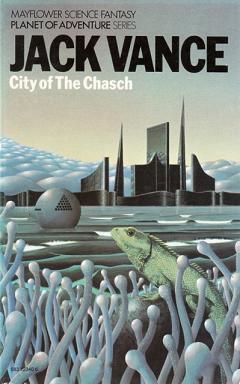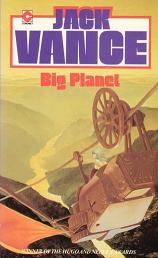
Fantasms and Magics
Jack Vance
192 pages
published in 1978
There was a time when I devoured each Jack Vance book I could find, back in my personal Golden Age of science fiction (which is age twelve, as you know Bob). I wasn’t the only one: Vance has always been popular in The Netherlands and most of his novels and story collections have been translated. His appeal is not hard to understand: a great sense of style, excellent writing and a flair for creating exotic yet believable worlds and the science not too rigorous. Granted, some of his novels and especially his series did not so much end as gutter out because he lost interest in them halfway through, but you don’t really read Vance for the plot anyway. With Vance, you’re there for the journey, not the destination.
Because of this I’ve therefore always found him better as a novel than a short story writer, though he has indeed written several classic science fiction and fantasy stories. None of them are in this collection though, which is a bit of a grab bag. There’s one classic Dying Earth story in here for example, also included in the actual Dying Earth collection. Worse, this is a reprint of a previous Vance collection, Eight Fantasms and Magics, with two of the stories removed, including the best one, “Telek”.
Nevertheless this is an entertaining read, perhaps not the best introduction to Vance, as there are better novels or collections for this, but not something to skip either, though the original collection may be a better one to seek out.
-
The Miracle-Workers
This is the longest story in the collection and features an old theme of Vance: a decadent society that has forgotten about the high technology it uses, prefering magic (or “hoodoo” here) instead. -
When the Five Moons Rise
A horror story set on a planet where if the five moons rise together, nothing is what it seems. -
Noise
Stranded on a strange planet one man makes first contact with a very alien civilisation. -
The New Prime
The tests designed to objectively find the right ruler for a galaxy of two billion suns may not be as perfect as thought. -
Guyal of Sfere
One of Vance’s elegiac Dying Earth stories, set in an age where technology for all intents and purposes has become magic and surviving humans have no real purpose in life other than to entertain themselves during their long lives. -
The Men Return
In a world where madness reigns, being sane is not a survival trait.

